
Puff Pastry Cream Horns: a Sweet Treat for The Whole Family!

Puff pastry cream horns are delicious and easy to make desserts, filled with diplomat cream and served with a sprinkling of powdered sugar. Lighter than other typical cream horns (like Sicilian cannoli for example), they are crunchy on the outside and creamy on the inside, perfect to enjoy as a dessert at the end of a meal or for a dessert buffet.
To make them, cut a roll of puff pastry into strips, roll each one around the appropriate mold and bake in the oven. Meanwhile, add the custard and whipped cream. When the puff pastry cream horns are ready, we fill them with a piping bag and decorate them with powdered sugar.
Puff Pastry VS Phyllo Dough
Puff pastry and phyllo dough are both staples in the world of pastries, each bringing a unique texture and flavor to a variety of dishes, from savory appetizers to sweet desserts. Though they may seem similar at a glance, especially since they're both used in layered pastries, there are distinct differences in their ingredients, preparation, and culinary uses that set them apart.
Puff pastry is made with flour, water, butter, and salt. The key to its rich, flaky texture is the incorporation of butter through a process known as lamination. Layers of dough are folded and rolled out repeatedly, with butter spread between each layer. This meticulous process creates thin sheets of dough separated by butter. When baked, the water in the butter and dough turns to steam, puffing up the pastry and leaving behind airy layers. Puff pastry is prized for its buttery flavor and delicate, flaky texture, making it perfect for dishes like turnovers, tarts, and vol-au-vents.
On the other hand, phyllo dough, also spelled "filo" or "fillo," is an unleavened dough made from flour, water, and a small amount of oil, occasionally with a touch of vinegar or lemon juice to help make it more pliable. Phyllo is rolled or stretched into paper-thin sheets that, unlike puff pastry, don't contain any fat layers within the dough. Instead, cooks brush each sheet with melted butter or oil before stacking them to build up layers. This results in a pastry that, once baked, is crisp and flaky with a slightly more brittle texture than puff pastry. Phyllo is commonly used in Middle Eastern and Balkan cuisines, most notably in dishes like baklava and spanakopita.
How to Keep Puff Pastry From Getting Soggy
Keeping puff pastry from turning soggy, especially when preparing dishes with moist fillings, is all about creating a barrier between the pastry and the filling, as well as ensuring proper baking conditions. One effective technique is to pre-bake or "blind bake" the puff pastry before adding the filling. To do this, lightly prick the base of the pastry with a fork (to prevent it from puffing up too much), cover it with parchment paper, and then weigh it down with baking beans or uncooked rice. Bake it in a preheated oven according to the recipe's instructions, but only until it's partially cooked and just starting to turn golden. This creates a firmer base that's less likely to soak up moisture. Additionally, applying a thin layer of egg wash or melted butter over the surface of the pastry before adding the filling can act as a sealant, further preventing sogginess. Finally, make sure your filling is not too wet, as excess moisture will seep into the pastry. If it's a particularly juicy filling, consider thickening it with a bit of cornstarch or flour, or reducing it down before adding it to the pastry shell. Remember, a hot oven is crucial for puff pastry to achieve its characteristic flaky texture, so always bake at the recommended temperature.
What is the Secret to Puff Pastry?
The secret to exquisite puff pastry lies in the art of creating hundreds of delicate, buttery layers through a meticulous process known as lamination. This involves carefully folding and rolling out the dough multiple times, with precise layers of butter spread between each fold. Temperature control is crucial throughout this process; the butter must be cold enough to remain solid until the pastry is baked, ensuring it doesn't blend into the dough too soon. This careful balance between temperature, technique, and timing transforms simple ingredients—flour, butter, water, and salt—into a light, airy pastry that's at once crisp and tender. Mastery of puff pastry is a testament to a baker's skill, making it a foundation of both sweet and savory culinary creations.
Tips and Variations
– To avoid ruining the spiral shape of the cream horns, oil the molds with some seed oil: in this way, the puff pastry will come off easily.
– You can fill your cream horns according to your tastes, with hazelnut cream, cream, ricotta cheese and chocolate chips, or Chantilly cream.
– You can replace the puff pastry with shortcrust pastry.
– You can also make savory puff pastry horns, filling them with your favorite ingredients, like pesto, cheese or vegetables.
– You can make the puff pastry by hand, and make it ahead, a couple of days prior and proceed with the filling before serving these delicious desserts.
More Puff Pastry Recipes You Might Like
How to Store Puff Pastry Cream Horns
The puff pastry cream horns can be stored (while filled) in the fridge for a maximum of 2 days, closed in an airtight container. This way, however, they will tend to lose their friability and crunchiness. Therefore, we recommend keeping the cream horns without their filling closed in a tin container, at room temperature, for 3-4 days, and filling them with the cream just before serving them.
Find out how to prepare puff pastry cream horns by following the step-by-step recipe and advice.
Ingredients
How to Make Puff Pastry Cream Horns
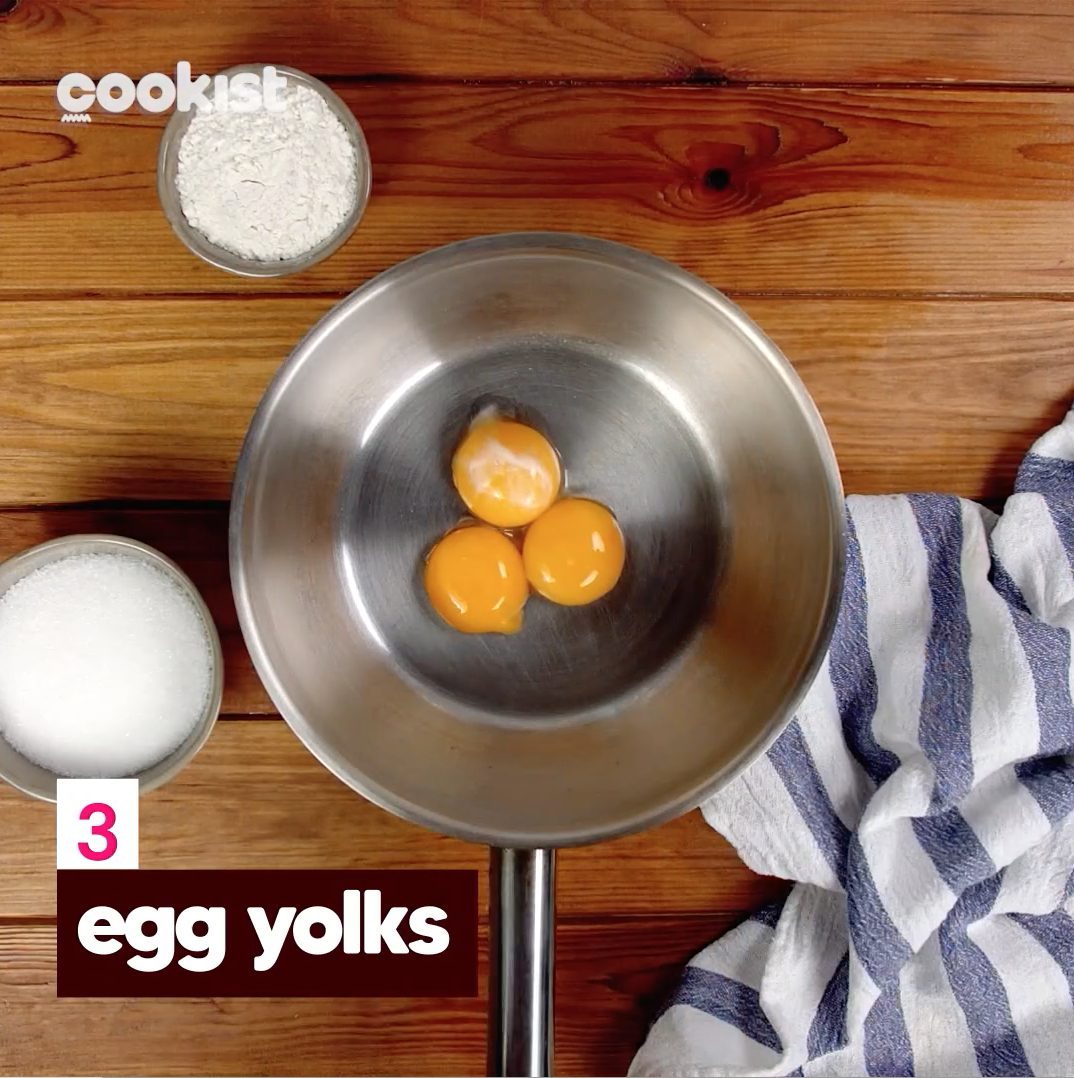;Resize,width=712;)
Inside of a bowl, deposit the three egg yolks.
Inside of a bowl, deposit the three egg yolks.
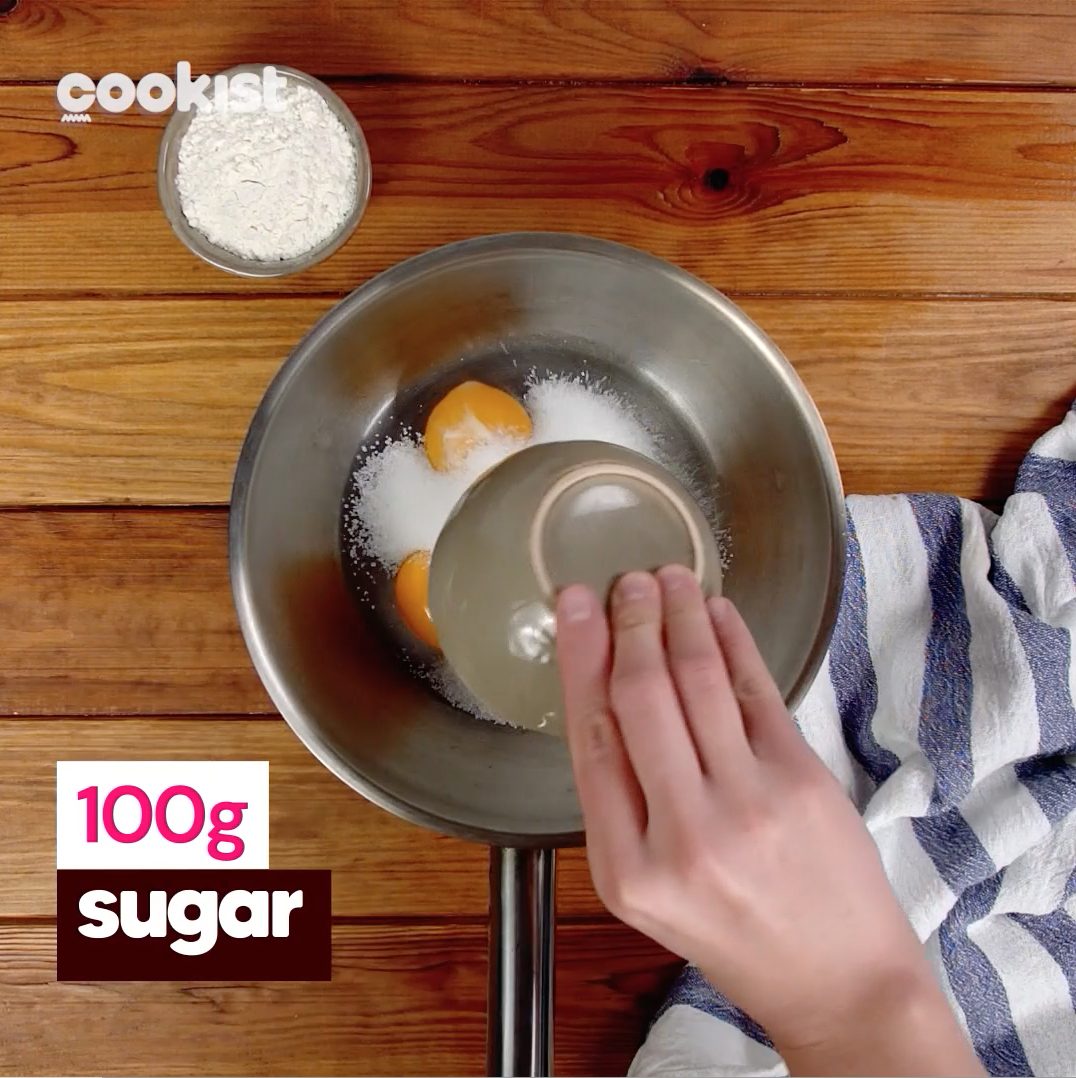;Resize,width=712;)
Then, add the sugar.
Then, add the sugar.
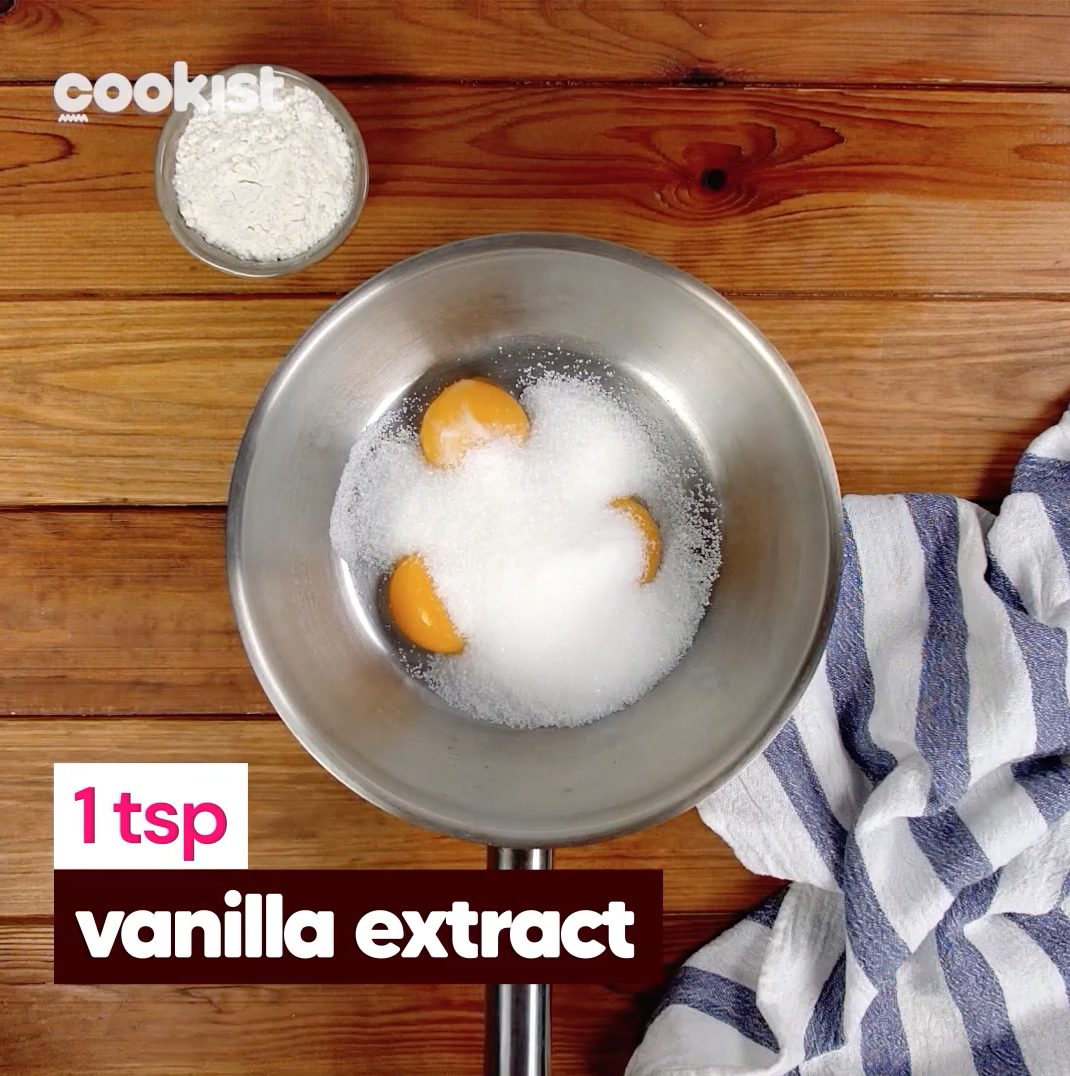;Resize,width=712;)
And the teaspoon of vanilla extract.
And the teaspoon of vanilla extract.
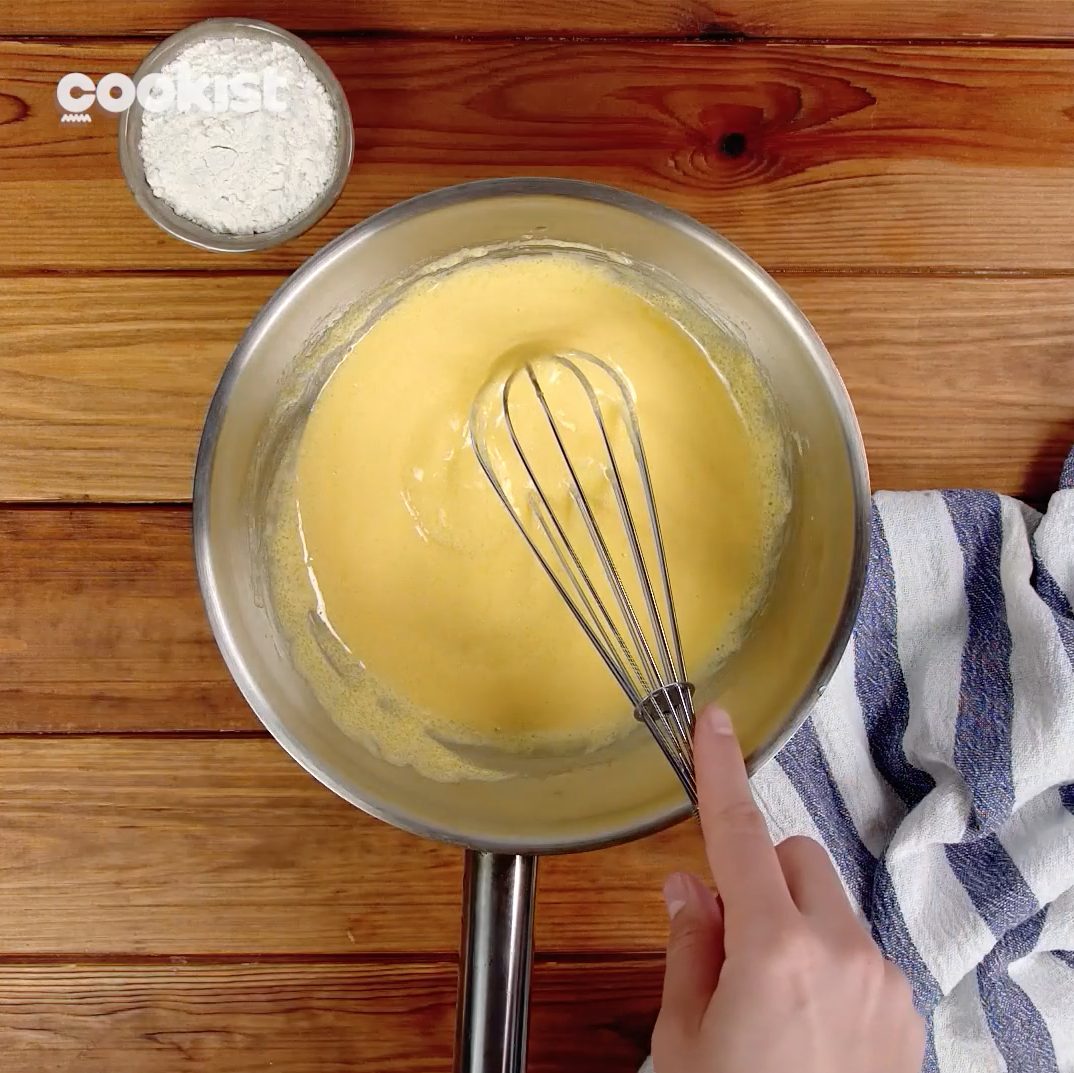;Resize,width=712;)
With a hand whisk, whisk the egg yolks, the vanilla extract and the sugar until the mixture turns pale and fluffy.
With a hand whisk, whisk the egg yolks, the vanilla extract and the sugar until the mixture turns pale and fluffy.
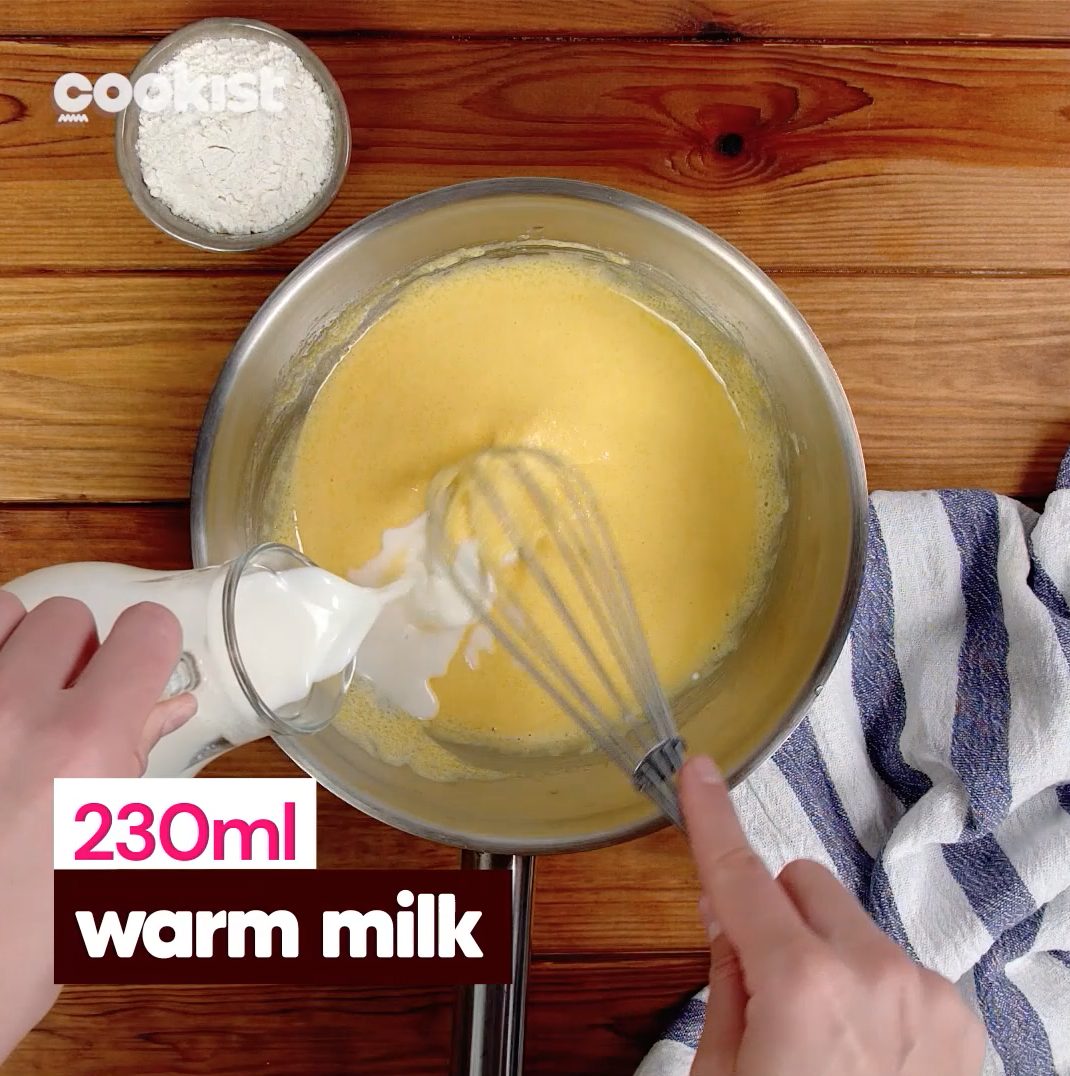;Resize,width=712;)
Add half of the milk, and whisk to mix the ingredients together.
Add half of the milk, and whisk to mix the ingredients together.
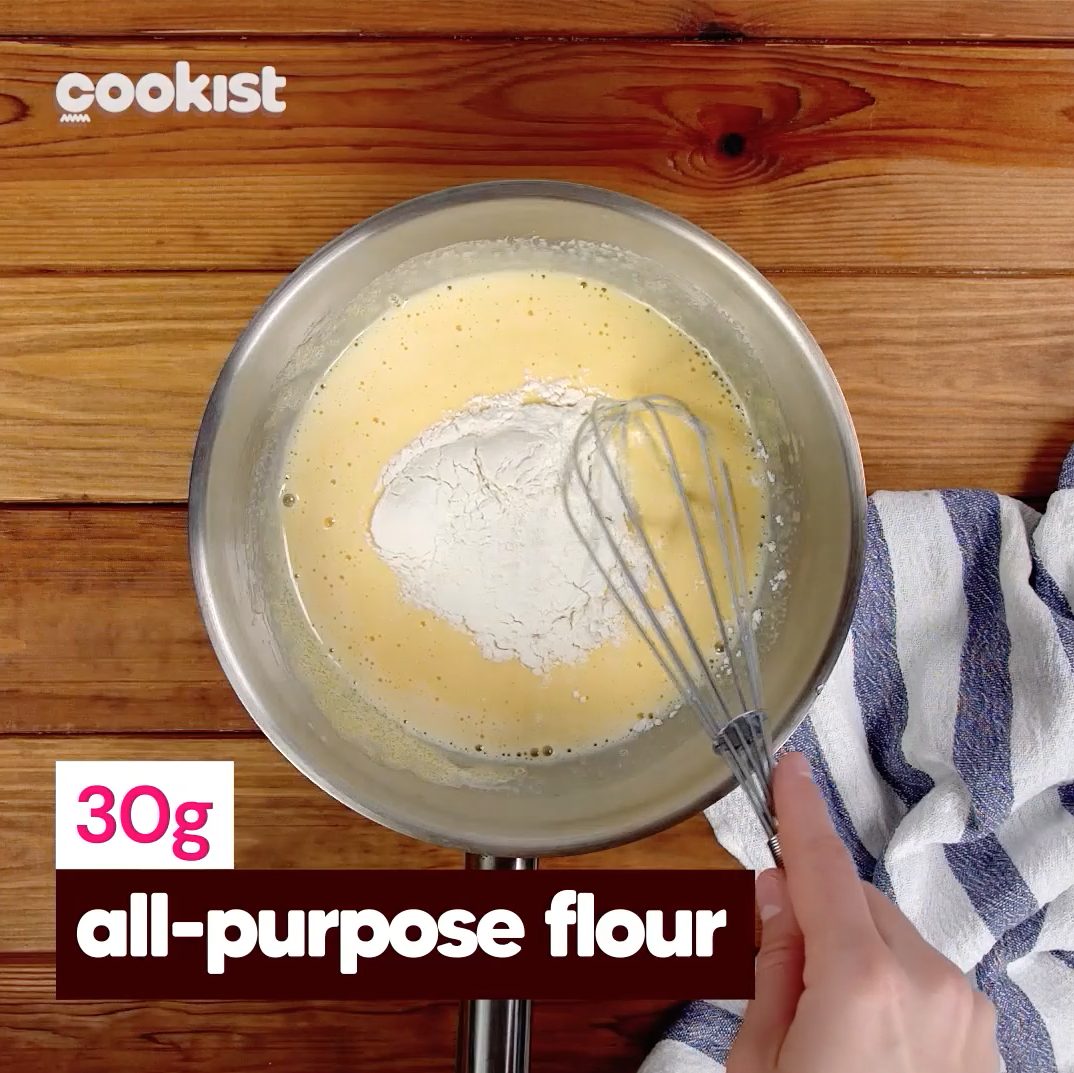;Resize,width=712;)
Then, whisk everything with the flour until the mixture turns smooth and add the leftover milk.
Then, whisk everything with the flour until the mixture turns smooth and add the leftover milk.
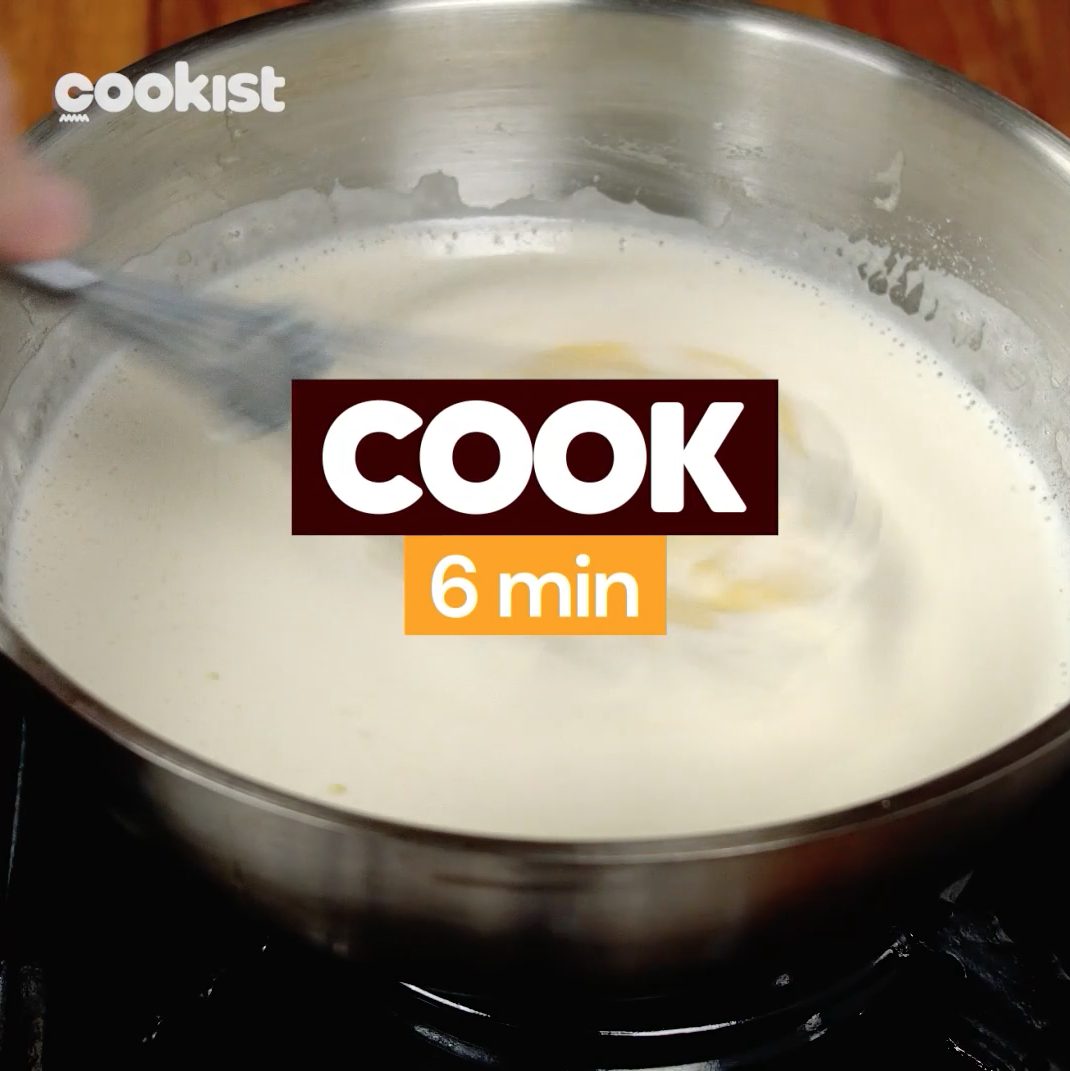;Resize,width=712;)
Place the pastry cream obtained on top of the stove, over low heat, and cook it for 5-7 minutes, whisking constantly, until it turns thick.
Place the pastry cream obtained on top of the stove, over low heat, and cook it for 5-7 minutes, whisking constantly, until it turns thick.
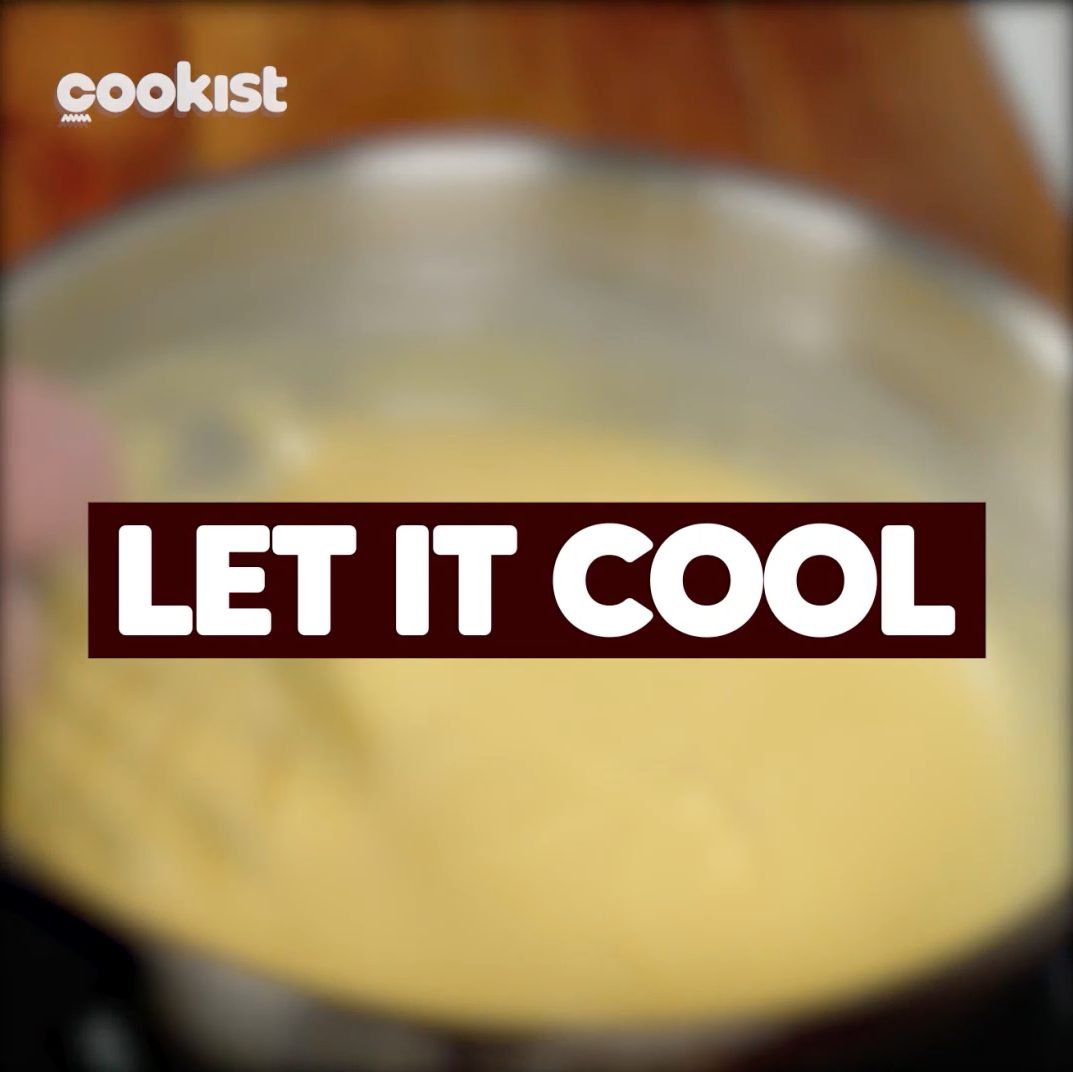;Resize,width=712;)
Pour the hot cream into a glass bowl, cover with cling film and let it sit in the fridge to cool down.
Pour the hot cream into a glass bowl, cover with cling film and let it sit in the fridge to cool down.
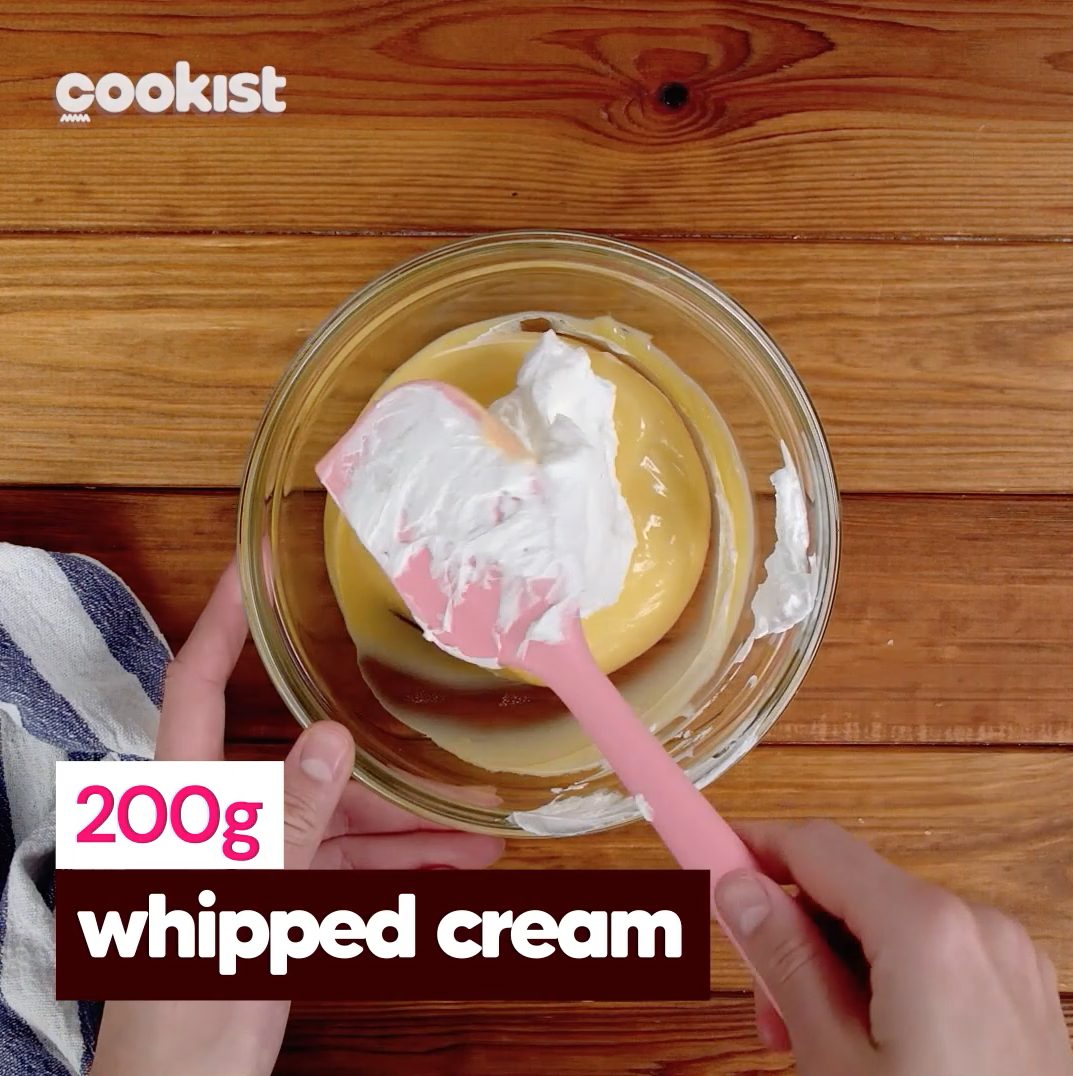;Resize,width=712;)
Once the cream has cooled down enough, fold whipped cream into the custard and incorporate it with a spatula, mixing from top to bottom.
Once the cream has cooled down enough, fold whipped cream into the custard and incorporate it with a spatula, mixing from top to bottom.
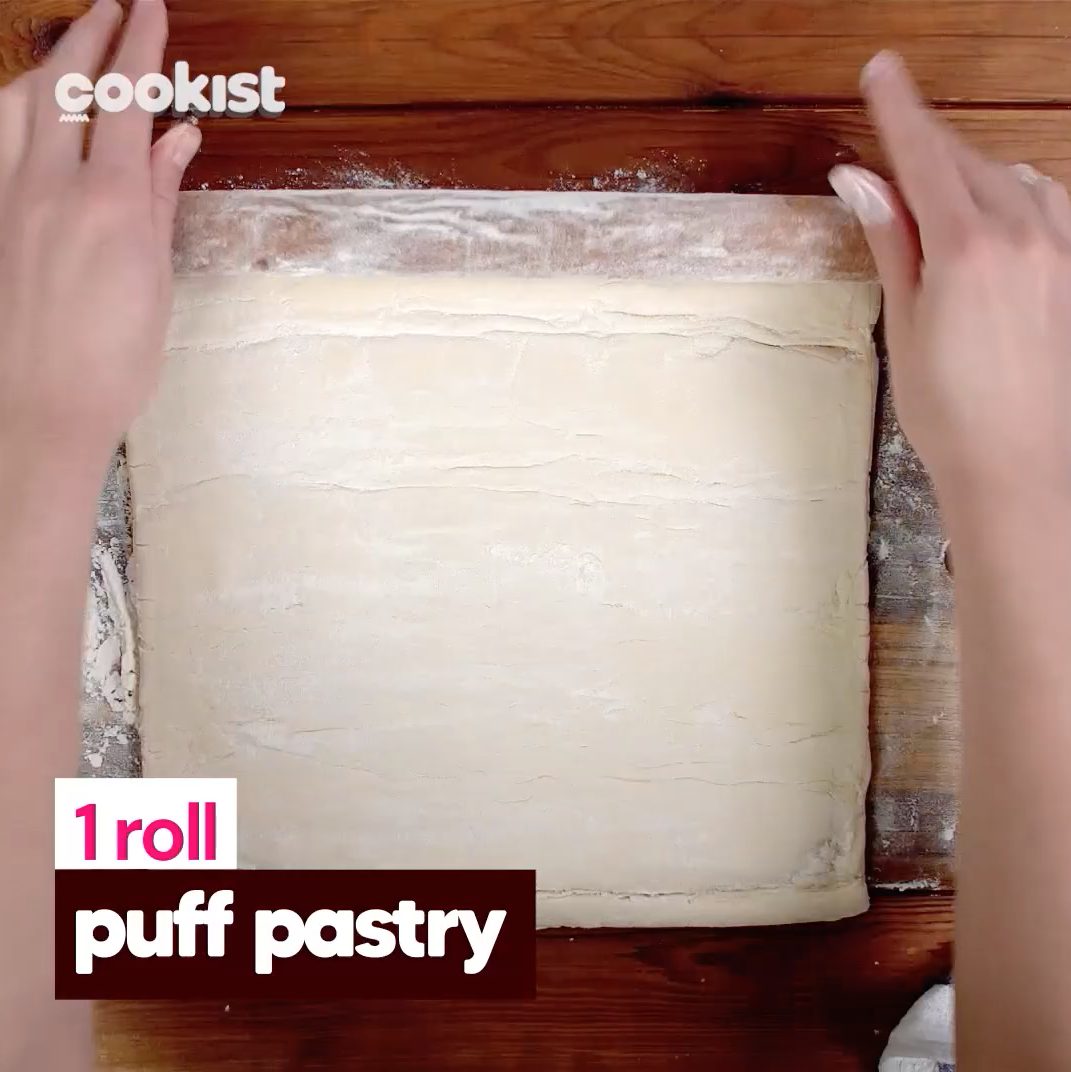;Resize,width=712;)
Roll out one sheet of puff pastry on a wooden surface.
Roll out one sheet of puff pastry on a wooden surface.
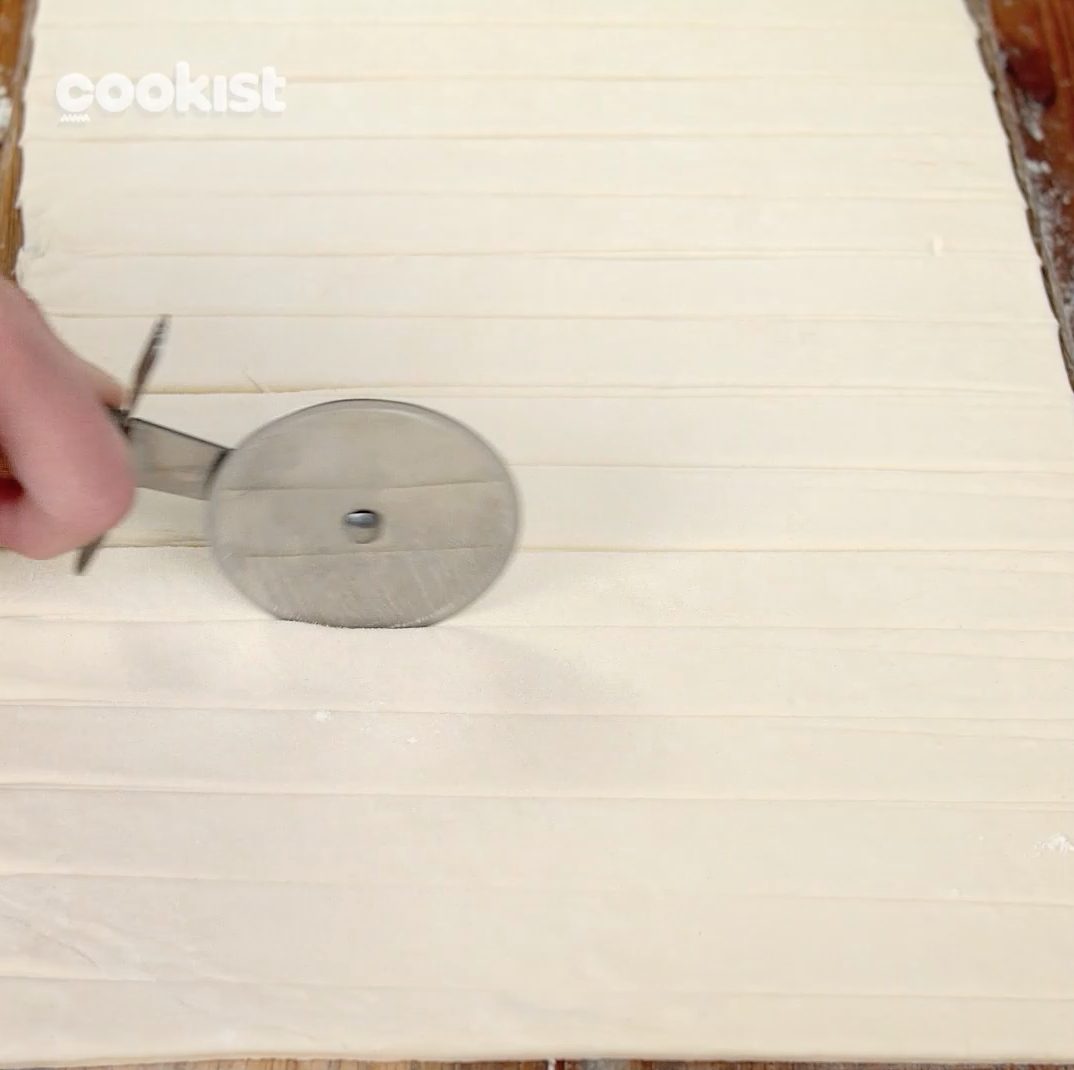;Resize,width=712;)
Helping yourself with a cutter, cut the puff pastry into 12 strips.
Helping yourself with a cutter, cut the puff pastry into 12 strips.
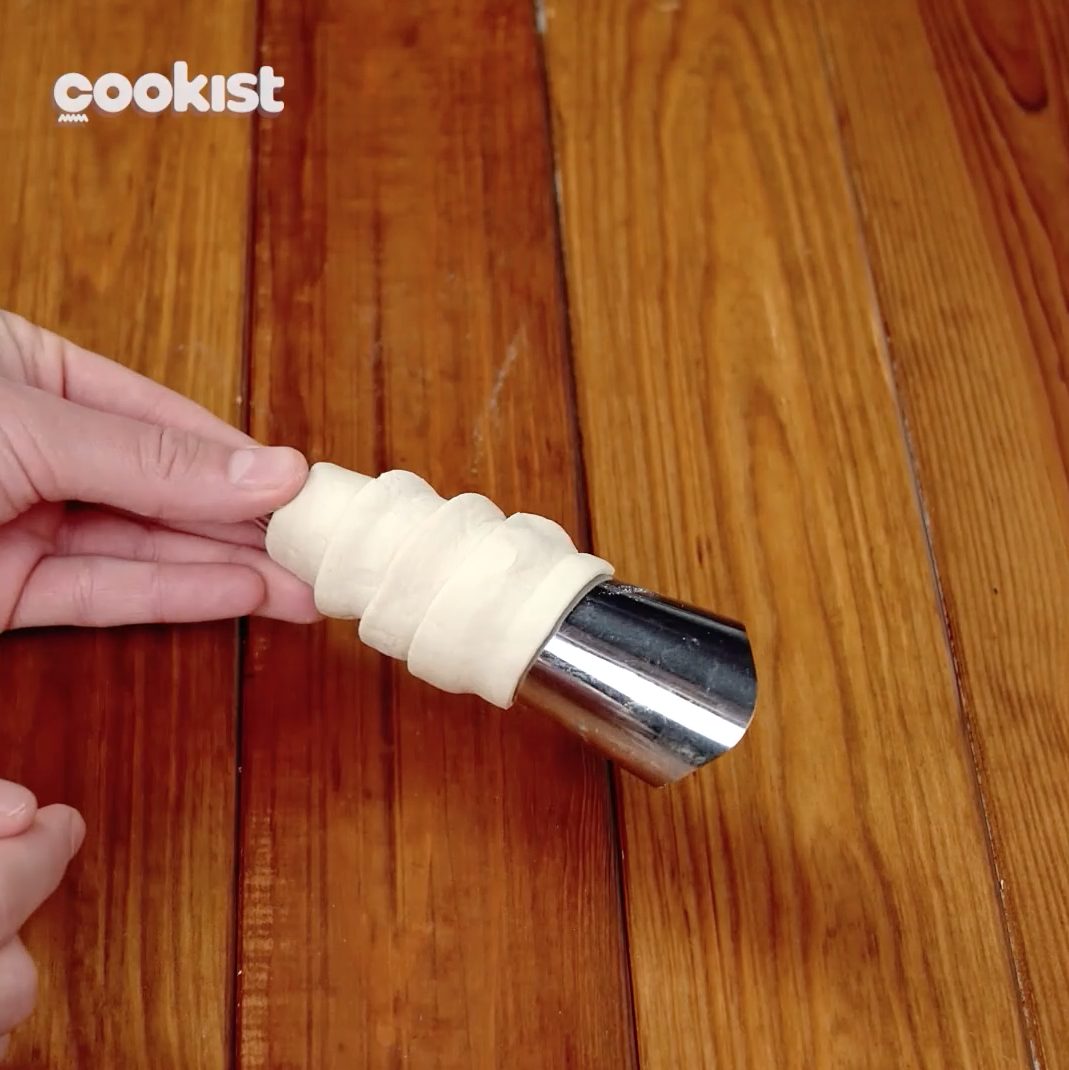;Resize,width=712;)
Wrap each strip you obtain around a steel cream horn mold, overlapping the layers slightly.
Wrap each strip you obtain around a steel cream horn mold, overlapping the layers slightly.
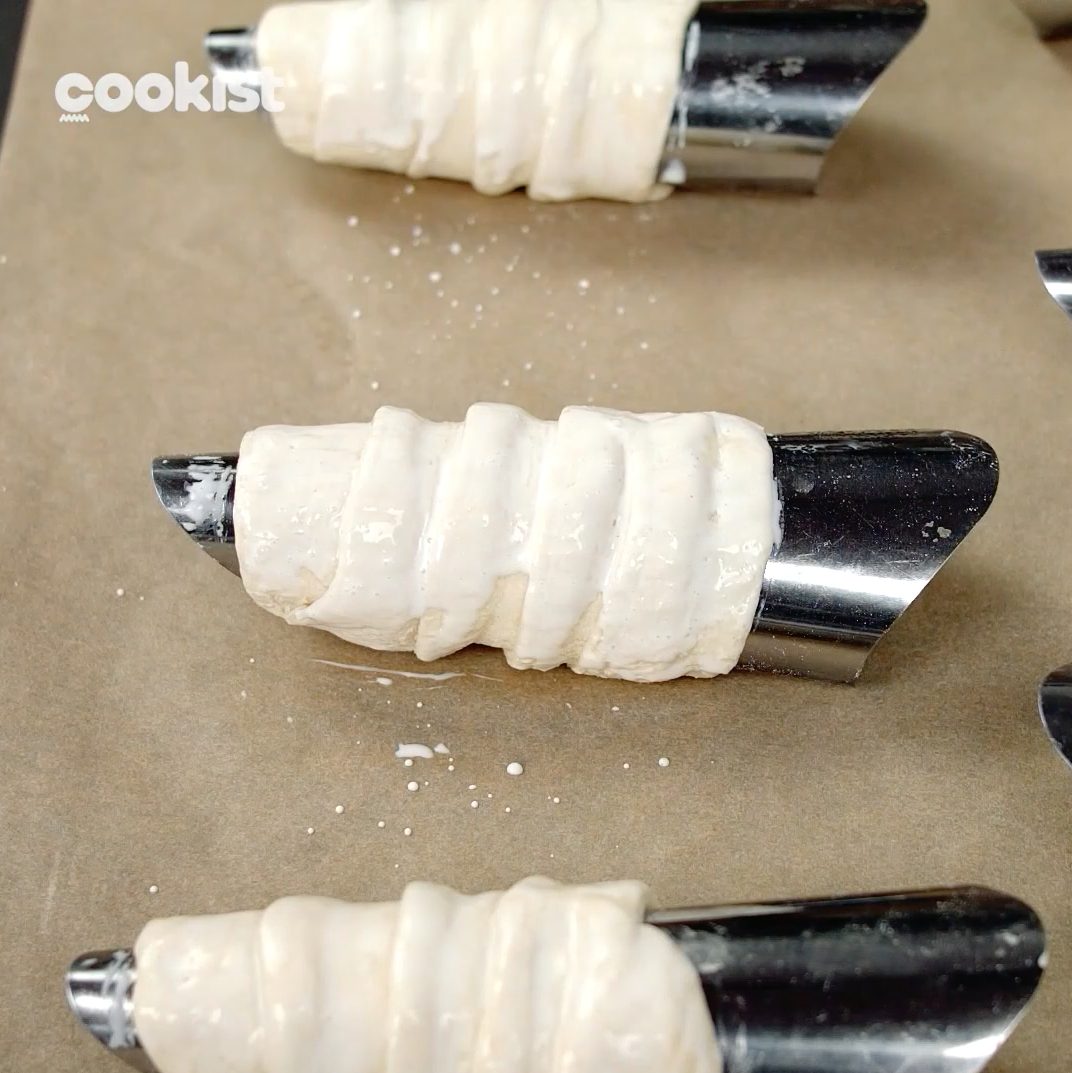;Resize,width=712;)
Place the cream horns obtained on a baking tray lined with parchment paper and brush with cream or an egg wash before placing them in the oven for 15-20 minutes at 440°F (200°C).
Place the cream horns obtained on a baking tray lined with parchment paper and brush with cream or an egg wash before placing them in the oven for 15-20 minutes at 440°F (200°C).
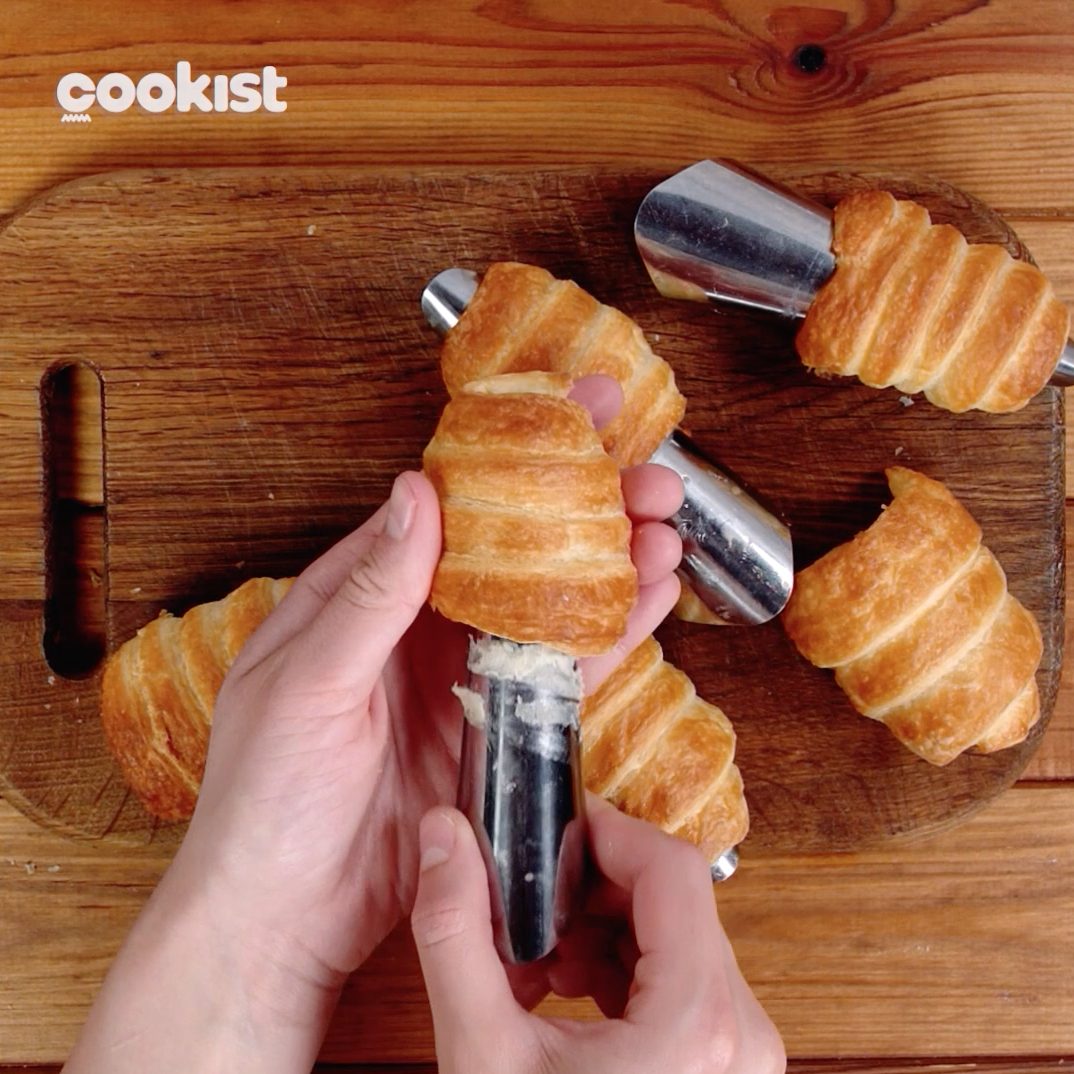;Resize,width=712;)
Let the horns cool down, then carefully remove them from the mold.
Let the horns cool down, then carefully remove them from the mold.
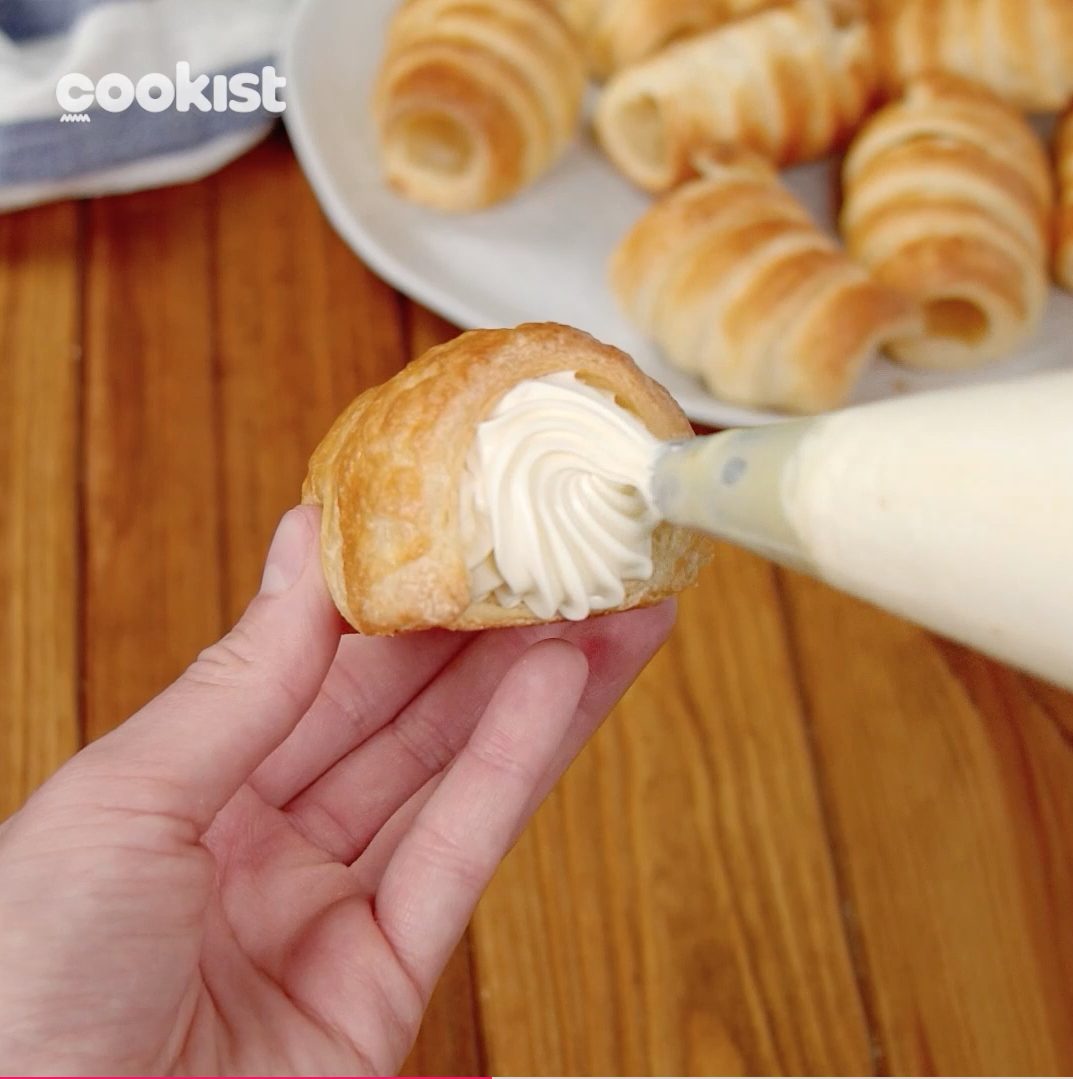;Resize,width=712;)
Fill each horn with the mixture of custard and fresh cream using a piping bag - and make sure you fill both sides of your cream horns, so that the filling is rich.
Fill each horn with the mixture of custard and fresh cream using a piping bag – and make sure you fill both sides of your cream horns, so that the filling is rich.
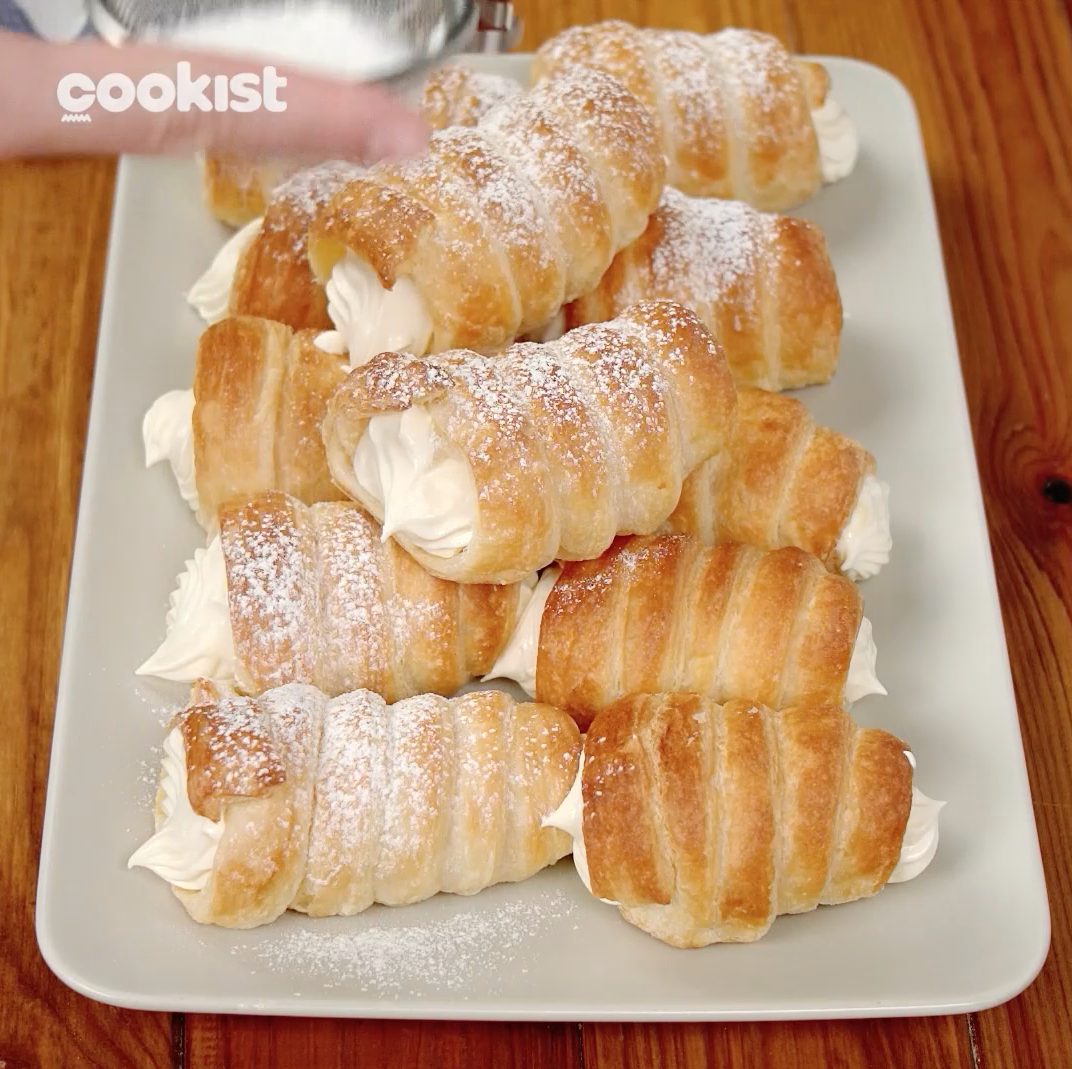;Resize,width=712;)
Place the horns on a serving plate and decorate with powdered sugar.
Place the horns on a serving plate and decorate with powdered sugar.

Your puff pastry cream horns are ready to be enjoyed!
Your puff pastry cream horns are ready to be enjoyed!
;Resize,width=767;)



